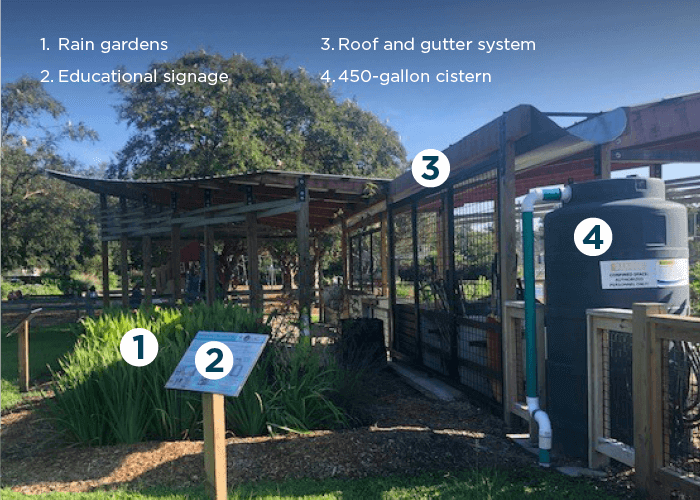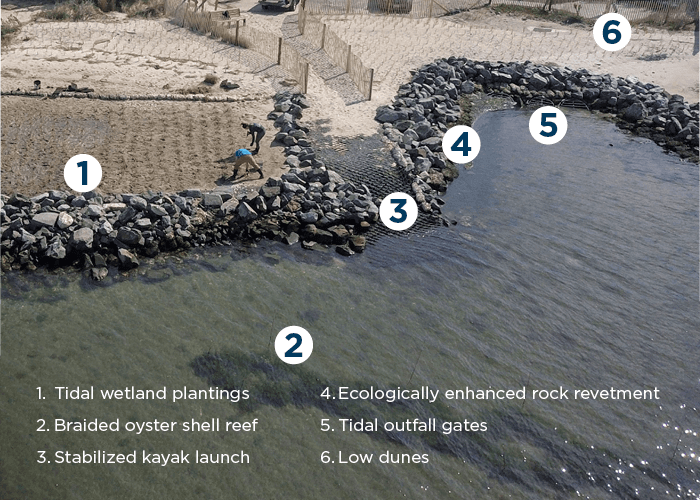Across the country, communities large and small face the devastating impact of flooding, yet each community’s ability to recover and plan for the future is different.
To help local leaders determine approaches to flooding or sea level rise that can work best for them, the American Flood Coalition, in partnership with the Embassy of the Kingdom of the Netherlands and Arcadis, created the Adaptation for All guide and digital tool.
Drawing on examples from the U.S. and the Netherlands — a country with a long history of flood challenges and innovations — this guide and tool highlights 26 approaches broken down by cost, benefits, and other considerations. Using these categories, communities of any size can determine the solutions that best fit into their flood resilience strategies.
How to use this guide
1
Head to the concepts for local leaders
2
Look at the cost and complexity diagram
3
Review key tips and ideas for developing a local flood action plan
4
Share this guide with key stakeholders
Case Studies
 Charleston, South Carolina
Charleston, South Carolina
In 2019, the city created Charleston Rainproof, with the aim of capturing more rainwater by using both public and private spaces for water storage. Working with Clemson University Extension, the City reached more property owners — its four projects so far can store a combined 1,950 gallons of water.
 North Miami, Florida
North Miami, Florida
To reduce flooding, the City of North Miami worked with the Val Alen Institute to convert a vacant lot into the Good Neighbor Stormwater Park, which opened in 2019. The park’s retention pond and absorbent landscaping can store 20 times more water than the vacant lot and is designed for the two feet of sea level rise.
 Dewey Beach, Delaware
Dewey Beach, Delaware
To address flooding from stormwater runoff, high tides, and storm surges, the Town of Dewey Beach recently constructed a project with living shoreline features, including a low dune, tidal wetland plantings, and an offshore oyster reef. The project was implemented through a partnership between the Town, the Delaware Center for Inland Bays, the Delaware Department of Transportation, and design and construction consultants.


